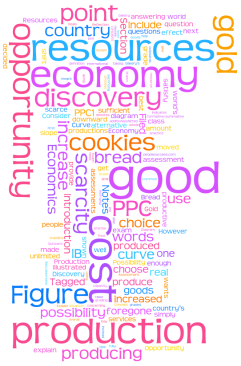Posts Tagged ‘Data’
The President’s Dilemma: Statistics
Posted on: May 4, 2011
How can we as the special task force of the council of economic advisors develop an economic policy so that we can ease the economic crisis caused by increase in oil price without increasing the national debt?
In order to answer this question, our group analyzed the statistics given for selected years. We were particularly interested in looking at the national debt, as we were told not to develop a policy that does not require an increase in “already-too-high” national debt: $14 trillion. Upon analyzing the data given, we have noticed that along with increase in nominal national debt, so did the nominal GDP. (Nominal GDP is dollar value of all final goods and services produced by resources in the country in some period of time; it tells the money value of goods and services in different years) Take a look at the graph below:

(Figure 1) Growth of nominal national debt and nominal GDP
Clearly, the nation’s real GDP is increasing in a faster rate than is the national debt. Therefore, the president should not worry about a slight increase in the nominal national debt. It is more important to do something with the economic crisis with some money from the government than to save the money and make the economy fall down even more dramatically.
Unemployment and Economic Freedom
Posted on: April 8, 2011
Neo-classical economists believe that economy should be let free of government intervention. They believe that government should not set labor unions, days of holidays, price floors, price ceilings, etc. Thus, they think that unemployment would be low in countries where economy if free. Is this true? Consider the data below:

(Data 1) Economic freedom and unemployment
According to this data, it seems that the neo-classical economists are quite reasonable. As government intervene more in the economy, the unemployment seems to rise. However, this is not the complete truth because of some fluctuation in the data.
References: Economic freedom rank, Unemployment
Data Response Reflection
Posted on: November 8, 2010

Writing IB Economics data response (Photo by John Bohn)
Data response is reading an article given and defining the key terms, drawing relevant diagrams and explaining them, and evaluating the decisions made. It is on paper 3 of the IB Economics HL exam, weighing 45% of the overall grade. Here are several tips to do well in the data response.
Reading the article
- read quickly and understand well the article given
- underline, highlight, and/or circle the key terms and quotations
Definitions
- do not be vague = be precise
- know the definition by heart
Diagrams
- draw the diagrams with a pencil
- don’t forget ELOTAA
- make your explanation concise yet clear
- do not forget to include Ps and Qs in the explanation
Evaluation
- write in short paragraphs
- use CRAMPSS
- include quotations from the article given
- discuss about the type of good (necessary, free, Veblen, etc.)
With practice, data response will not be too much of a burden. Certainly the formative data responses helped me to do well in the summative data response.
